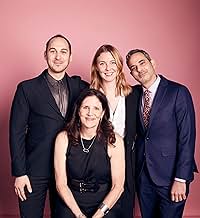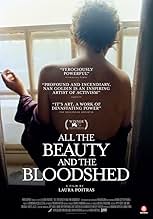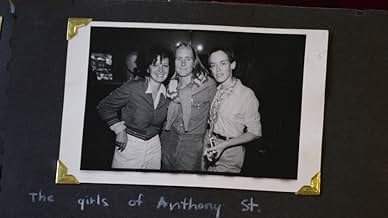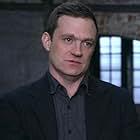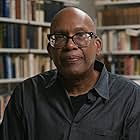IMDb RATING
7.5/10
8.8K
YOUR RATING
Follows the life of artist Nan Goldin and the downfall of the Sackler family, the pharmaceutical dynasty who was greatly responsible for the opioid epidemic's unfathomable death toll.Follows the life of artist Nan Goldin and the downfall of the Sackler family, the pharmaceutical dynasty who was greatly responsible for the opioid epidemic's unfathomable death toll.Follows the life of artist Nan Goldin and the downfall of the Sackler family, the pharmaceutical dynasty who was greatly responsible for the opioid epidemic's unfathomable death toll.
- Nominated for 1 Oscar
- 37 wins & 57 nominations total
Robert Drain
- Self - Judge
- (as Judge Robert Drain)
David Armstrong
- Self - Photographer and Friend of Nan
- (archive footage)
Bruce Balboni
- Self - Actor
- (archive footage)
Featured reviews
Another important story to tell but the film itself is lacking some of that connection I'm expecting to feel.
The choice to weave Nan's personal, artistic and activism journey all together is an interesting but risky one because it weakens the delivery on either one of them.
Personally, it feels like the film is putting Nan on a pedestal, instead of where she was most of her life, the dark, dirty and forgotten edges of the city. As a result, her on screen persona sometimes feels even more out of touch than a fictional character.
For what it's worth, the film comes back to the title in the end where it ties All The Beauty And The Bloodshed that Nan has seen throughout her whole life with who she is and what she is trying to achieve now. But it's just a little bit too late for my liking.
The choice to weave Nan's personal, artistic and activism journey all together is an interesting but risky one because it weakens the delivery on either one of them.
Personally, it feels like the film is putting Nan on a pedestal, instead of where she was most of her life, the dark, dirty and forgotten edges of the city. As a result, her on screen persona sometimes feels even more out of touch than a fictional character.
For what it's worth, the film comes back to the title in the end where it ties All The Beauty And The Bloodshed that Nan has seen throughout her whole life with who she is and what she is trying to achieve now. But it's just a little bit too late for my liking.
It still amazes me how evolved the documentary film genre has become over the years.
The amount of freedom you can experiment within a documentary has become more noticeable. In this one particularly, you see a bunch of different styles and even story branches.
There is a mix of themes such as topical activism, what can be classified as art, a determination for justice and accountability, a woman's struggling life and the power of family.
The central character I had no idea about and we certainly got a thorough look into her life both as an artist and as a daughter.
It felt very definitive as I felt it gave you the perfect portrait of this person's upbringing and how certain traumas lead to this groundbreaking change in the art world.
I also liked at how they told each aspect of her life in a parallel style. The timings of shift to a different part of her life felt well-timed and gave us a very satisfying conclusion.
This was pretty interesting and while I wasn't overwhelmed by it, I can see others feeling that way.
It's well made, the content and imagery is strong and the central character was not afraid to open herself up to her life story.
The amount of freedom you can experiment within a documentary has become more noticeable. In this one particularly, you see a bunch of different styles and even story branches.
There is a mix of themes such as topical activism, what can be classified as art, a determination for justice and accountability, a woman's struggling life and the power of family.
The central character I had no idea about and we certainly got a thorough look into her life both as an artist and as a daughter.
It felt very definitive as I felt it gave you the perfect portrait of this person's upbringing and how certain traumas lead to this groundbreaking change in the art world.
I also liked at how they told each aspect of her life in a parallel style. The timings of shift to a different part of her life felt well-timed and gave us a very satisfying conclusion.
This was pretty interesting and while I wasn't overwhelmed by it, I can see others feeling that way.
It's well made, the content and imagery is strong and the central character was not afraid to open herself up to her life story.
This documentary about Nan Goldin and her battles throughout her life--personally and professionally--is many pronged with New York as the background. She was part of the art movement in the 1980's when AIDS started to invade that scene unabated since the administration of the time felt it was only a gay disease and would not be addressed. Her anger could have been surmised as the beginning there, but then we got a glimpse of her life growing up with the poor treatment her sister got by her parents. Things progressed from there. Her activism developed in the 1980's and continued into the age of Purdue Pharmacy's creation and rampant spread of oxycodone. The documentary may seem to be a bit of a hodgepodge of memories, but when you understand that her anger was developing almost from the moment she was born, you can understand how heartfelt her concern was for those who died around her. This was nominated as Best Feature Documentary for the Oscars It is an uncomfortable yet quite informative watch.
All the Beauty and the Bloodshed can join Fire of Love in the club of Oscar-nominated documentaries from 2022 that would have been more worthy winners than Navalny. It's admittedly a small club, but I feel like both of those movies have moments that demonstrate documentary filmmaking at its best.
In the case of All the Beauty and the Bloodshed, it's probably the final 15-20 minutes that shines the brightest. It can be a slow and somewhat uneven feeling documentary at some points, but it builds to some phenomenal and emotionally hard hitting final scenes. The rest of the documentary still tends to hit far more often than it misses, but I did get the sense it may have been a tiny bit too long, and while I respect the choice not to tie together its two primary narratives more explicitly, part of me was waiting for them to collide more directly at a point. Still, leaving some of that up to the viewer felt like a deliberate choice, and I can respect that.
It follows Nan Goldin, with the film both recounting her life story from the 1950s to the 1990s and detailing her activism against the Sackler family and their role in the opioid epidemic in the 2010s. The latter might be more interesting narratively, but the former has the more interesting presentation, seeing as Goldin's an accomplished artist/photographer, and the documentary frequently relies on her work to serve as visuals.
It's a heavy and often sad documentary, dealing with mental illness, addiction, corruption, censorship, the AIDS crisis, discrimination, and domestic violence. It might be upsetting to some viewers as a result, but I think it was best not to pull punches (so long as people know what they're in for before deciding to watch it). It's a largely powerful documentary that I think will stick with me. Not perfect, but it has some amazing sequences that were very striking and moving.
In the case of All the Beauty and the Bloodshed, it's probably the final 15-20 minutes that shines the brightest. It can be a slow and somewhat uneven feeling documentary at some points, but it builds to some phenomenal and emotionally hard hitting final scenes. The rest of the documentary still tends to hit far more often than it misses, but I did get the sense it may have been a tiny bit too long, and while I respect the choice not to tie together its two primary narratives more explicitly, part of me was waiting for them to collide more directly at a point. Still, leaving some of that up to the viewer felt like a deliberate choice, and I can respect that.
It follows Nan Goldin, with the film both recounting her life story from the 1950s to the 1990s and detailing her activism against the Sackler family and their role in the opioid epidemic in the 2010s. The latter might be more interesting narratively, but the former has the more interesting presentation, seeing as Goldin's an accomplished artist/photographer, and the documentary frequently relies on her work to serve as visuals.
It's a heavy and often sad documentary, dealing with mental illness, addiction, corruption, censorship, the AIDS crisis, discrimination, and domestic violence. It might be upsetting to some viewers as a result, but I think it was best not to pull punches (so long as people know what they're in for before deciding to watch it). It's a largely powerful documentary that I think will stick with me. Not perfect, but it has some amazing sequences that were very striking and moving.
I read the review by CinemaSerf and had similar reaction: I had expected much more of an exposé of the Sacklers. The documentary assumed that viewers would just take the side of the protesters against Sackler, but anyone with an enquiring mind might just wonder what the evidence was. I was in the fortunate position of having read Empire of Pain by Patrick Radden Keefe, which does a thorough and gripping account of the origins of the Sackler family and all their dodgy dealings, pushing opioid drugs to physicians, and recommending alarmingly high doses while arguing that only certain types of people got addicted. Once you have that background, any doubts about Nan Goldin's activism are dispelled, and you look in awe at what she's done. In effect, this film, which is quirky and relies mainly on vision and sound rather than words to convey messages, complements the scholarly verbal account in Empire of Pain. The Sackler story is only part of it - it sits in the context of Nan Goldin's remarkable life and career as photographer documenting the underground life of unconventional people after she escaped her dysfunctional family. It's an important film documenting an era in history, and showing how individuals can take on the rich and powerful. Nan features in Patrick Radden Keefe's book, and he features in her film, but I think that if you put the two together, it's perfect and the whole is greater than the parts.
Did you know
- TriviaThe title of the film is a reference to Nan Goldin's older sister, Barbara Holly Goldin. It's a direct quote from a mental health evaluation of Barbara during her time at an institution. She died by suicide in 1965, at the age of 18. This film and Nan Goldin's 1986 "The Ballad of Sexual Dependency" are dedicated to her.
- Quotes
Nan Goldin: Photography is like a flash of euphoria.
- SoundtracksThe Cold Song
Performed by Klaus Nomi
- How long is All the Beauty and the Bloodshed?Powered by Alexa
Details
- Release date
- Country of origin
- Official sites
- Language
- Also known as
- Hayatın Tüm Acıları ve Güzellikleri
- Filming locations
- New York City, New York, USA(Metropolitan Art Museum protest)
- Production companies
- See more company credits at IMDbPro
Box office
- Gross US & Canada
- $500,082
- Opening weekend US & Canada
- $28,803
- Nov 27, 2022
- Gross worldwide
- $1,483,975
- Runtime1 hour 53 minutes
- Color
- Sound mix
- Aspect ratio
- 1.78 : 1
Contribute to this page
Suggest an edit or add missing content

Top Gap
What is the streaming release date of All the Beauty and the Bloodshed (2022) in Brazil?
Answer





